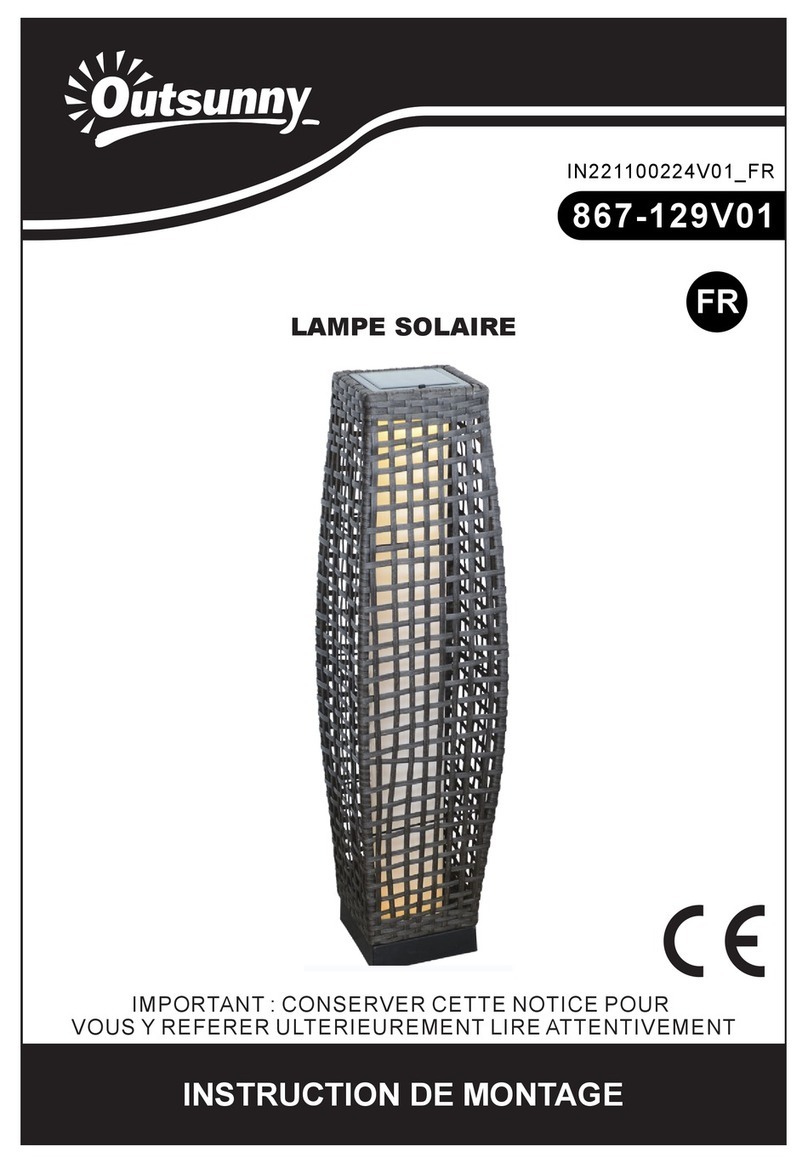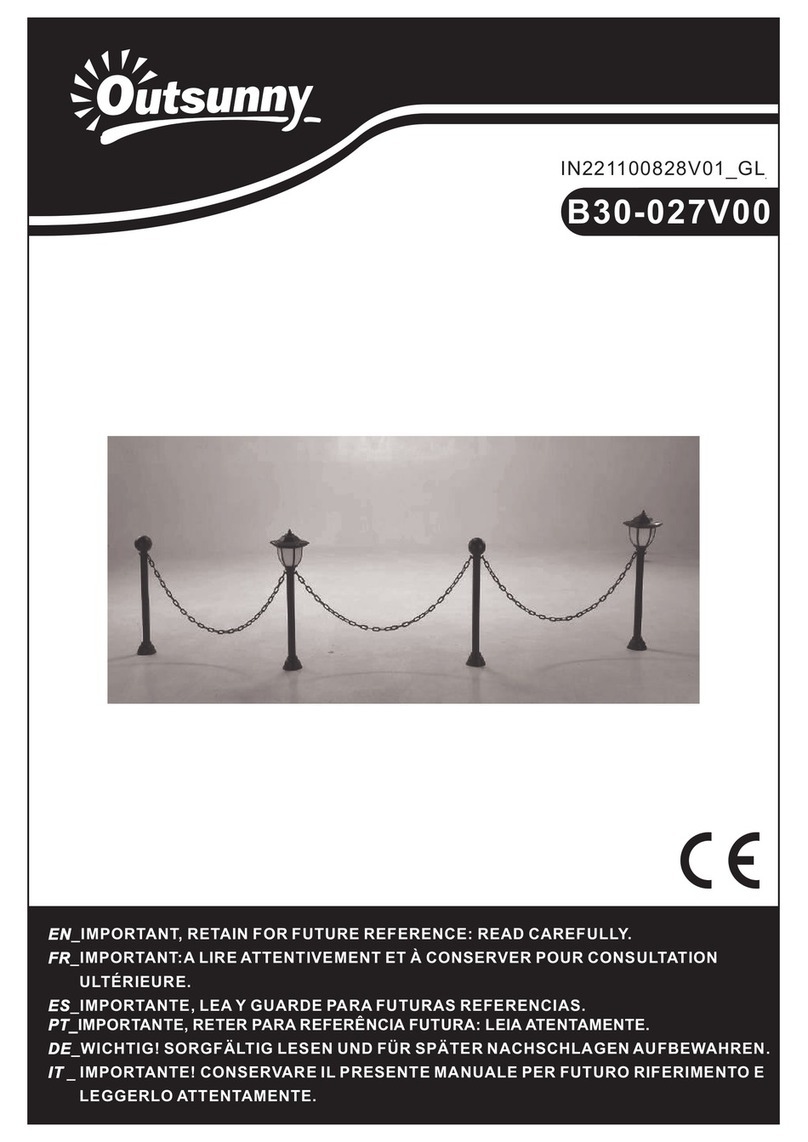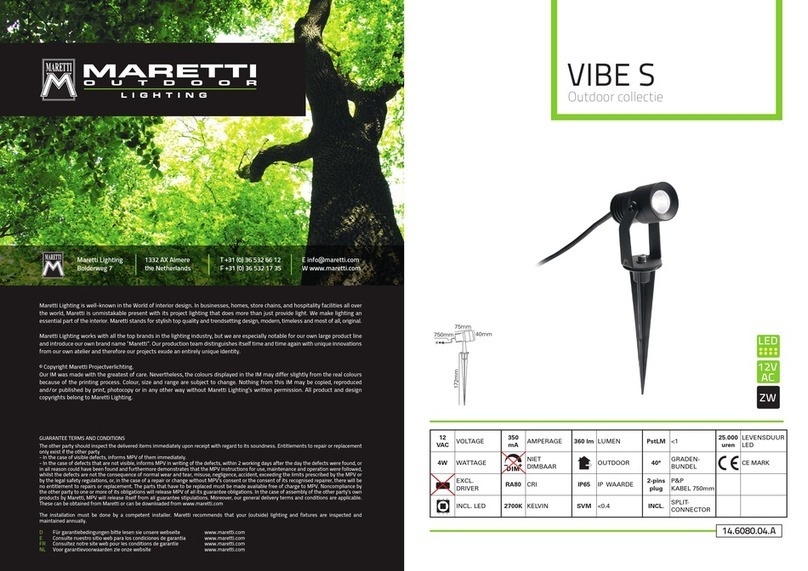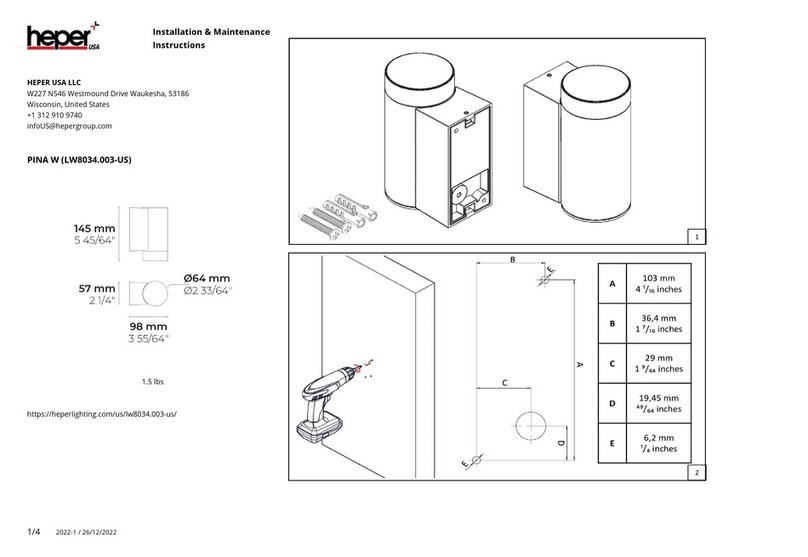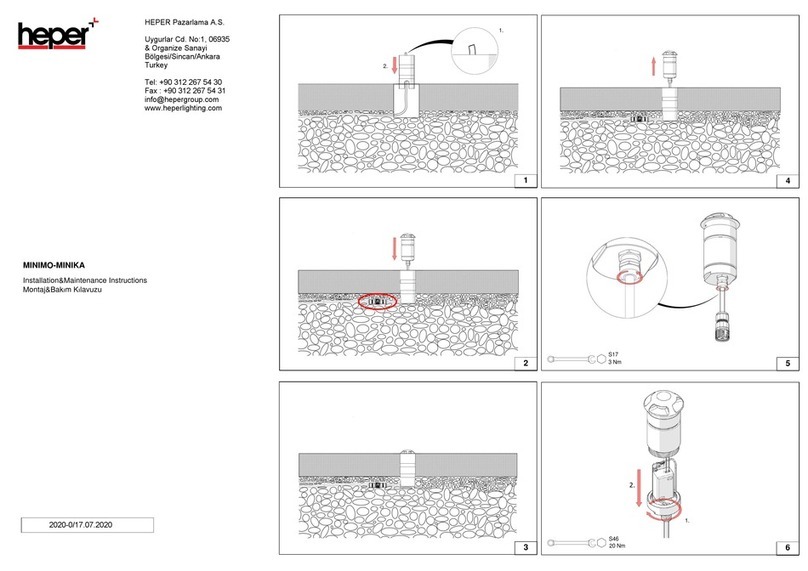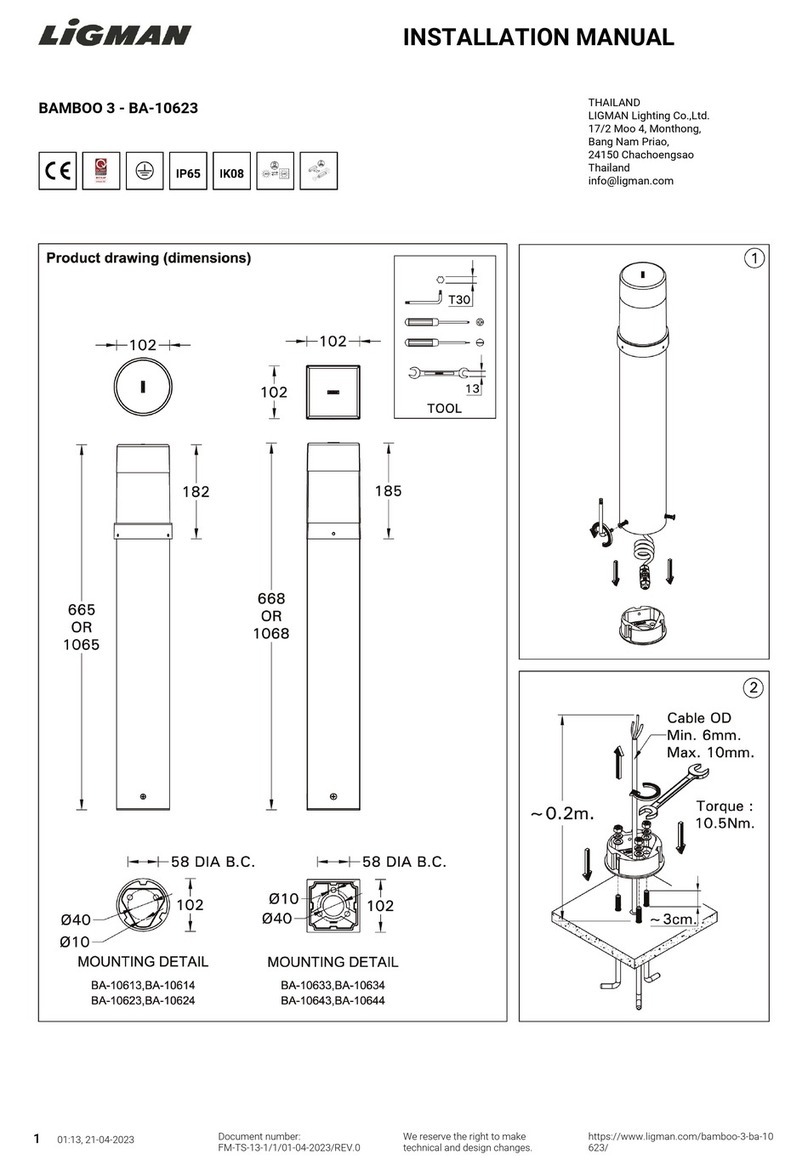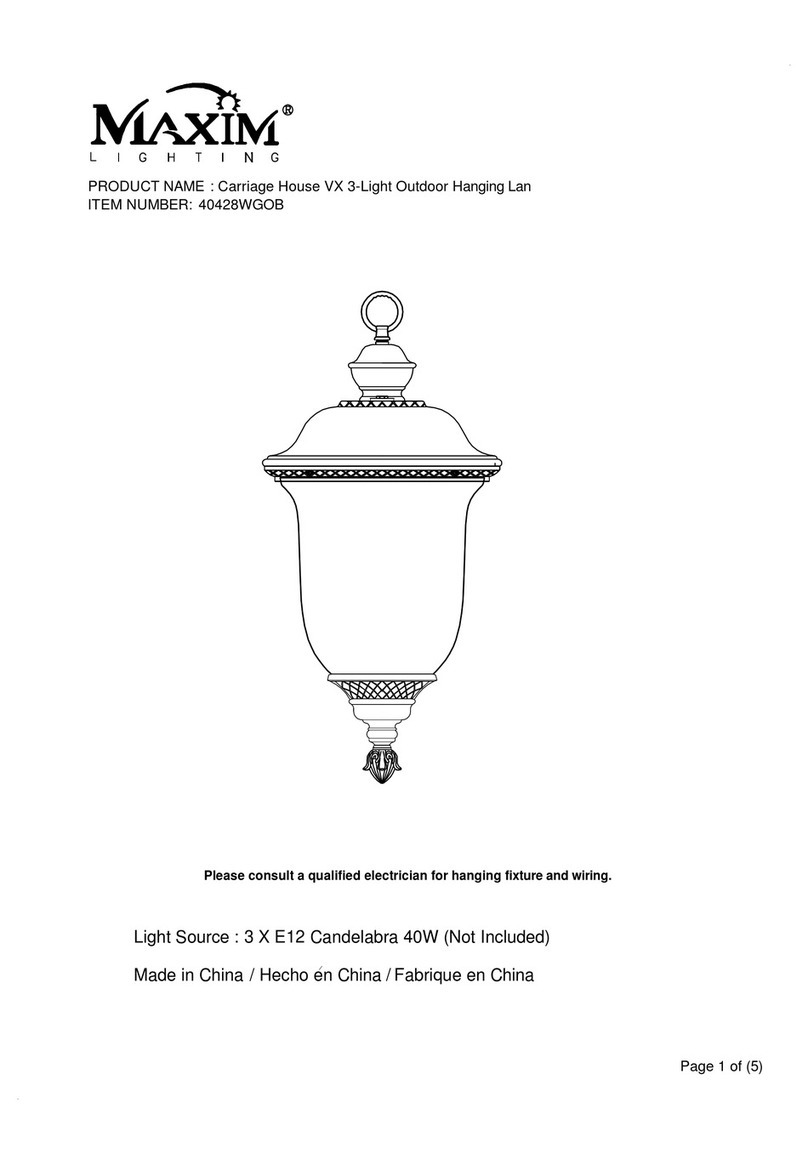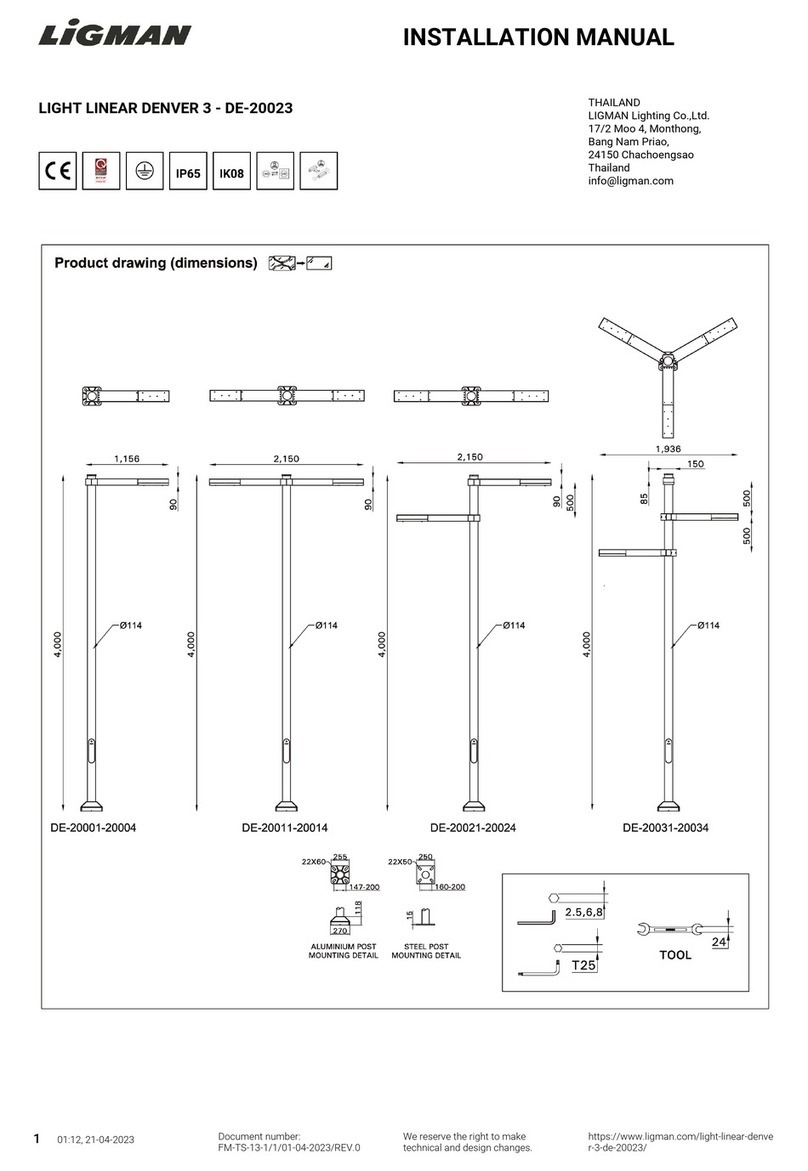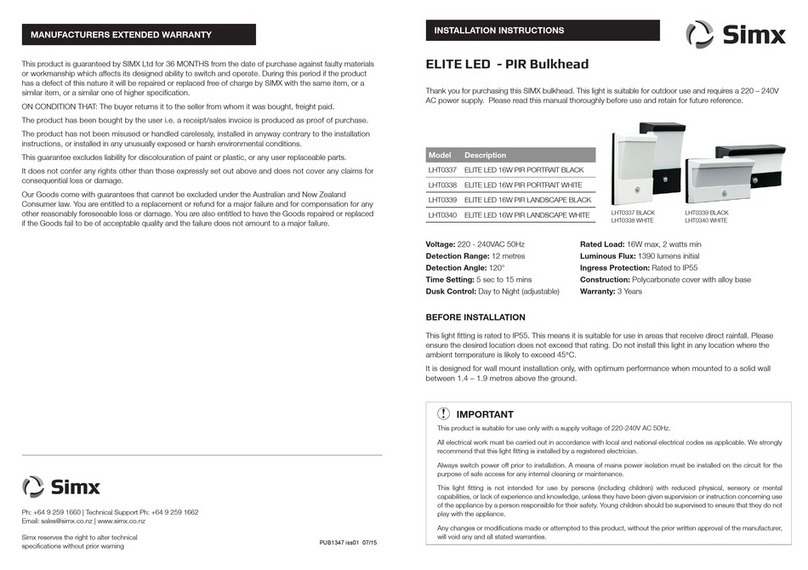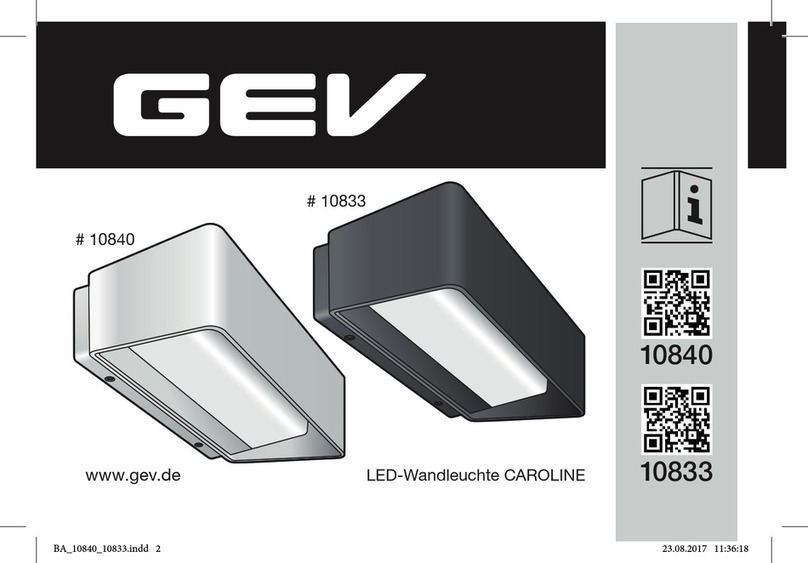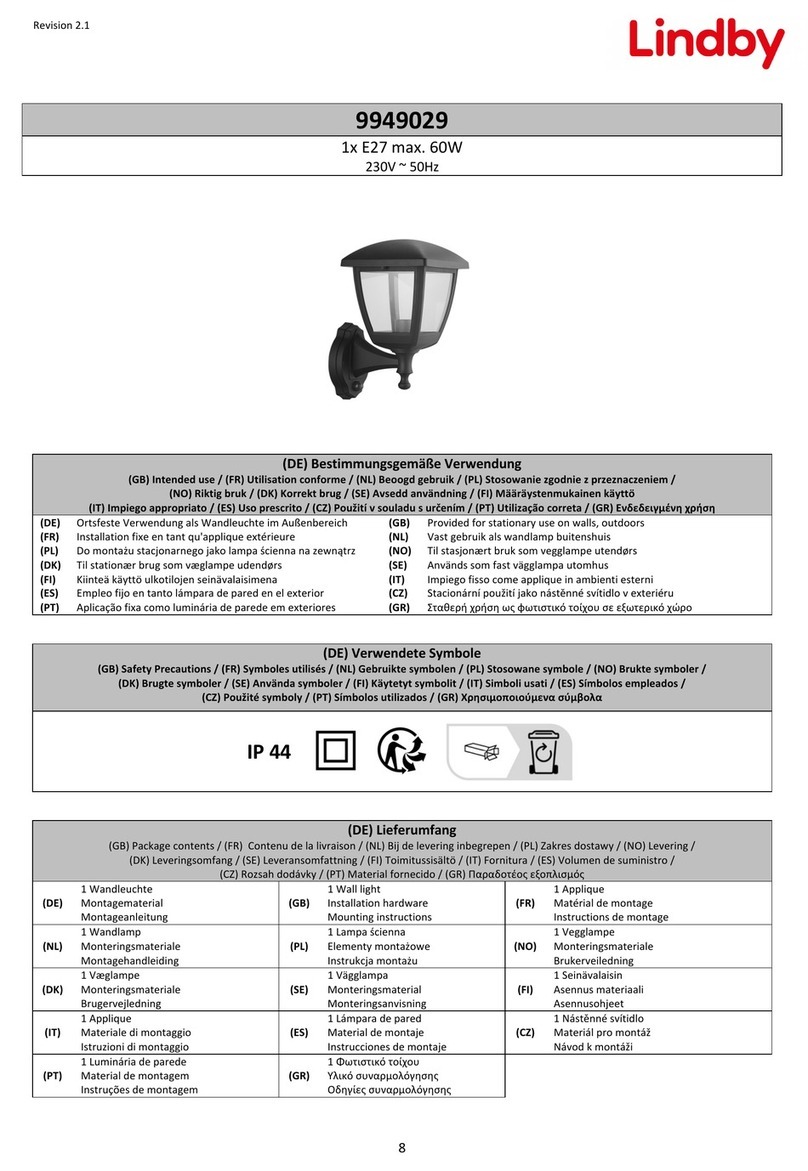
Step 1: Assemblare la sezione della lente e coprire allineando i morsetti bloccanti ai lati della lente
con i fori sotto la testina della lampada, ruotando in senso orario per bloccare in posizione.
Step 2: Assemblare i paletti al capo della filettatura. Assicurare le parti unendo i capi delle filettature.
Step 3: Inserire i paletti assemblati nell’apertura in cima alla base portante.
Step 4: Fissare la testina della lampada cosi assemblata in cima al palo per completare
l’installazione.
PRIMO USO
Step 1 : Portare l’interruttore Alto/Basso/OFF in posizione Alto/Basso.
Step 2 : La lampada solare si accendera’ automaticamente la sera e si carichera’ durante il giorno.
INSTALLAZIONE
Questa lampada puo’ essere installata su terreno morbido o su superfici dure.
INSTALLAZIONE SU TERRENO MORBIDO
Step 1: Individuare un’area dove volete posizionare la lampada e inserire il piolo nel terreno. Inserire
il piolo lasciando circa 10cm di lunghezza fuori dal terreno. Se il terreno e’ duro, ammorbidirlo con
dell’acqua inumidendolo o colpendo delicatamente il piolo nel terreno con un martelletto in gomma.
Step 2: Rimuovere la base portante dalla base del palo e posizionare a terra la lampada.
Step 3: Fissare la base montante al centro del piolo nel terreno.
Step 4: Per completare l’installazione, fissate nuovamente la lampada solare nell’apertura in cima
alla base portante.
INSTALLAZIONE SU SUPERFICI DURE
Step 1: Rimuovere la base montante dalla base del palo e posizionare a terra.
Step 2: Usando una matita marcare i 3 fori localizzati attorno al bordo della base portante.
Step 3: Rimuovere la base dalla posizione e forare nei 3 punti marcati, larghi a sufficienza per
infilarci i pioli in plastica al loro interno.
NB: Prima di fare i fori, e’ consigliabile che controlliate prima la luminosita’ durante la notte
per assicurarvi di essere soddisfatti della posizione scelta per l’installazione. Assicurarsi inoltre
ce in questa posizione la lampada riceva abbastanza luce solare diretta da caricare a pieno la
batteria durante il giorno.
Step 4: Posizionare i pioli in plastica in ciascun foro.
Step 5: Riposizionare la base montante al suo posto, allineando i fori con i pioli in plastica.
Step 6: Usando un cacciavite, inserire le viti attraverso i 3 fori nella base portante e nei pioli in
plastica. Stringere le viti per assicurare la base alla superficie.
Step 7: Per completare l’installazione, riconnettere la luce solare assemblata all’apertura in cima alla
base montante.
NB: Se assemblate su una superficie in legno, li pioli in plastica non sono necessari.
Semplicemente avvitate le viti direttamente nella superficie attraverso i fori della base
montante.
SOSTITUZIONE BATTERIA
Step 1: Disconnettere la testina della lampada dalla cima della sezione con la lente ruotandola in
senso antiorario e sollevando delicatamente.
Step 2: Sollevare il coperchio della batteria e sostituire la vecchia con una nuova ricaricabile 3.7V
14500 a ioni al litio.
IMPORTANTE: Quando la batteria e’ da smaltire, questa va riciclata o smaltita
correttamente.
NON SMALTIRE LA BATTERIA NEL FUOCO.
Step 3: Riporre il coperchio della batteria, e riporre la protezione sulla sezione delle lente.
RISOLUZIONE PROBLEMI
Se la vostra lampada solare non si accende automaticamente di sera, potrebbe essere a causa di una
delle seguenti condizioni:
1. L’interruttore A/B/OFF non e’ in posizione A/B. Portarlo quindi in questa posizione.
2. La batteria non e’ caricata a pieno o va sostituita.
3. La batteria potrebbe non essere installata correttamente. Controllare per assicurarsi che non sia
allentata e che sia installata correttamente.
4. La lampada solare potrebbe essere posizionata in una zona d’ombra, limitandone l’esposizione
alla luce solare e non permettendole di caricarsi pienamente.
5. La lampada potrebbe essere troppo vicina ad un’altra fonte di luce, inclusa un’altra lampada
solare.
6. Il pannello solare potrebbe essere sporco, limitando l’esposizione alla luce solare e non
permettendo che la batteria si carichi a pieno. Pulire la superficie del pannello solare con regolarita’
con un panno inumidito o con un asciugamano.
Se la vostra lampada solare si accende solo per poche ore in modalita’ stand-by, il pannello solare
potrebbe non ricevere abbastanza luce per caricare a pieno la batteria.
La prestazione della vostra lampada solare dipende dalla posizione geografica, e
dalla disponibilita’ di luce solare nei vari climi e stagioni. Durante giornate
nuvolose e in inverno, la lampada potrebbe non ricevere altrettanta luce solare,
col risultato di avere una durata operativa ridotta.


